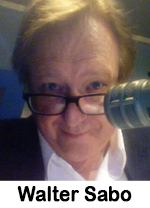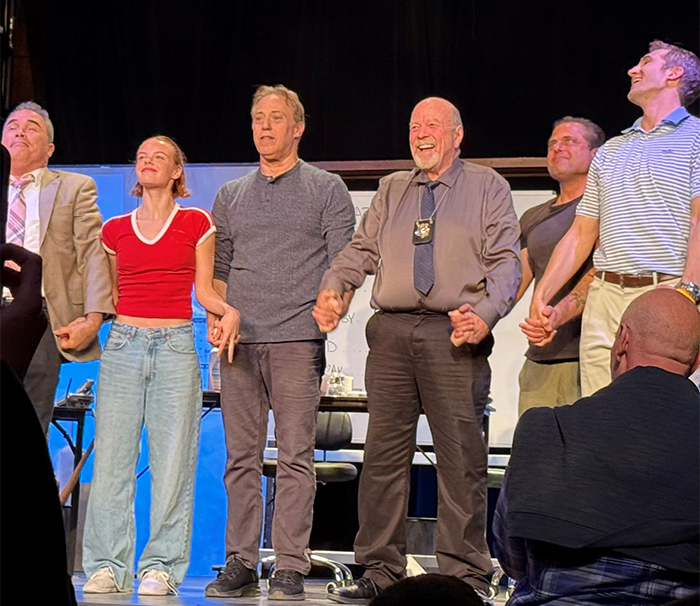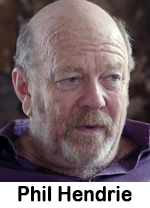By Walter Sabo
Consultant, Sabo Media
A.K.A. Walter Sterling
Radio Host, Sterling on Sunday
 Talk show talent, program directors, show producers and broadcast business decision-makers represent the core readership of this publication. Sometimes we are so close to something that we fail to see it for what it really is. That is the case of the “talk show host” in American radio. Michael Harrison refers to the often-shameless targeting of audiences as “the daily dance of affirmation.” I view the daily process of radio talk show hosting at its very core, as “the daily dance of freedom.”
Talk show talent, program directors, show producers and broadcast business decision-makers represent the core readership of this publication. Sometimes we are so close to something that we fail to see it for what it really is. That is the case of the “talk show host” in American radio. Michael Harrison refers to the often-shameless targeting of audiences as “the daily dance of affirmation.” I view the daily process of radio talk show hosting at its very core, as “the daily dance of freedom.”
Talk show hosts are a rare breed and endangered species who enjoy a unique freedom in American radio. Hosts can actually talk about whatever they want! Of course, they are subject to both the rewards and consequences of this freedom – but the process of doing a live talk show, sparked by opinion and controversy, is so spontaneous and uniquely dynamic that it cannot be controlled on a minute-to-minute level without losing the flavor that makes it so special and long-lived.
During a decade as a top-five market and network talk show host, no one has ever told me what to talk about. And for zillions of years as a programming executive prior to that, I never told a host what to talk about on their next show.
Talk hosts are granted remarkable radio freedom! Music jocks haven’t had that freedom since the 1960s. Music jocks have to get up the courage to ask permission to merely change the order of songs on their play list. Talk show hosts “own” three or four hours a day on a significant station or stations to say whatever they wish. That’s amazing! At first that freedom was a daunting, humbling challenge for me. However, I have been guided by my experience in programming or having launched some of the world’s most successful talk stations.
Based on that experience from both sides of the mic, here’s what works: Talk can entertain a listener of any age and demographic if the host talks about the listener’s day. I talk about my day framed for a listener, one listener – water in the basement, trouble with the sister-in-law, the parent-teacher conference, more trouble with the sister-in-law, the check engine light in the car never wants to go out, life at Walmart. I talk from a place of trust.
Trust that events that poke the landscape of our lives are a very big deal. Trust that I will never find the “right” topic on any editorial page. Trust that you, dear listener, already know who you are going to vote for in any election and that this English major does not have the magic wand to change your mind. Trust that my on-air opinion must never waiver or we have no show.
Listen to talk shows and stations that reach demos under 50: WMMS, Cleveland; KFI’s John and Ken; Casey Bartholomew at WBAP, Dallas; KMBZ, Kansas City; KFBK, Sacramento; the Elvis Duran Show; and streaming with Bubba the Love Sponge or Phil Hendrie. Those successful shows embrace the scope of conversation two best friends would have on the phone today. If two best friends would discuss a topic, why wouldn’t you share it on the air? If two best friends would never discuss it, why would you ever put it on the air?
Walter Sabo, consultant, can be contacted at Sabo Media: walter@sabomedia.com. Direct phone: 646-678-1110. Check out www.waltersterlingshow.com.
Share this with your network




 who will be honored at the ceremony on September 19, at the Omni Nashville Hotel. Six of the inductees were elected by a voting participant panel comprised of more than 900 industry professionals and two inductees were voted on by the Radio Hall of Fame Nominating Committee. This year’s inductees are: “The Crook & Chase Countdown” (Lorianne Crook and Charlie Chase); Lee Harris; Phil Hendrie; Jaime Jarrin; Kraig Kitchin; Barry Mayo; Mary McCoy; and Matt Siegel.
who will be honored at the ceremony on September 19, at the Omni Nashville Hotel. Six of the inductees were elected by a voting participant panel comprised of more than 900 industry professionals and two inductees were voted on by the Radio Hall of Fame Nominating Committee. This year’s inductees are: “The Crook & Chase Countdown” (Lorianne Crook and Charlie Chase); Lee Harris; Phil Hendrie; Jaime Jarrin; Kraig Kitchin; Barry Mayo; Mary McCoy; and Matt Siegel.  the radio industry and listeners. Voting for inductees begins May 20 and runs through June 3. The top six vote recipients from the more than 900 industry members receiving ballots will gain induction as part of the 2024 Radio Hall of Fame Induction class. The two additional inductees that will make up the eight-person induction class will be selected by the Radio Hall of Fame nominating committee. Spoken-word format personalities nominated include: John & Ken, Larry Elder, Lee Harris, Lincoln Ware, and Phil Hendrie.
the radio industry and listeners. Voting for inductees begins May 20 and runs through June 3. The top six vote recipients from the more than 900 industry members receiving ballots will gain induction as part of the 2024 Radio Hall of Fame Induction class. The two additional inductees that will make up the eight-person induction class will be selected by the Radio Hall of Fame nominating committee. Spoken-word format personalities nominated include: John & Ken, Larry Elder, Lee Harris, Lincoln Ware, and Phil Hendrie.  other platforms. Titled, Hendrie, and produced by Freestyle Digital Media and directed by Patrick Reynolds, the film features people like Hendrie’s one-time program director David Hall as well as comedians and Hollywood figures talking about the unique radio program Hendrie launched in 1990 in which he held kooky conversations with offbeat characters – all played by Hendrie himself – in real time. Hendrie tells KCAL-TV, “It was completely original… and it satirized something that I thought needed satirizing – talk radio.”
other platforms. Titled, Hendrie, and produced by Freestyle Digital Media and directed by Patrick Reynolds, the film features people like Hendrie’s one-time program director David Hall as well as comedians and Hollywood figures talking about the unique radio program Hendrie launched in 1990 in which he held kooky conversations with offbeat characters – all played by Hendrie himself – in real time. Hendrie tells KCAL-TV, “It was completely original… and it satirized something that I thought needed satirizing – talk radio.”  Talk show talent, program directors, show producers and broadcast business decision-makers represent the core readership of this publication. Sometimes we are so close to something that we fail to see it for what it really is. That is the case of the “talk show host” in American radio. Michael Harrison refers to the often-shameless targeting of audiences as “the daily dance of affirmation.” I view the daily process of radio talk show hosting at its very core, as “the daily dance of freedom.”
Talk show talent, program directors, show producers and broadcast business decision-makers represent the core readership of this publication. Sometimes we are so close to something that we fail to see it for what it really is. That is the case of the “talk show host” in American radio. Michael Harrison refers to the often-shameless targeting of audiences as “the daily dance of affirmation.” I view the daily process of radio talk show hosting at its very core, as “the daily dance of freedom.”